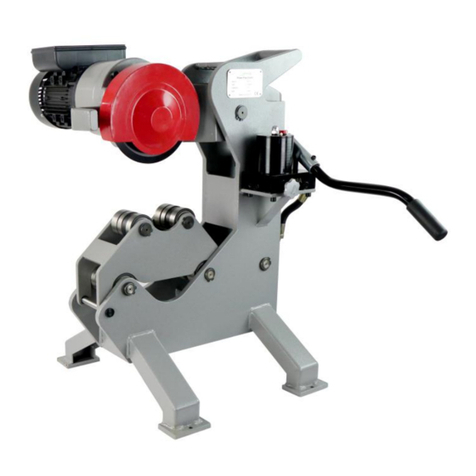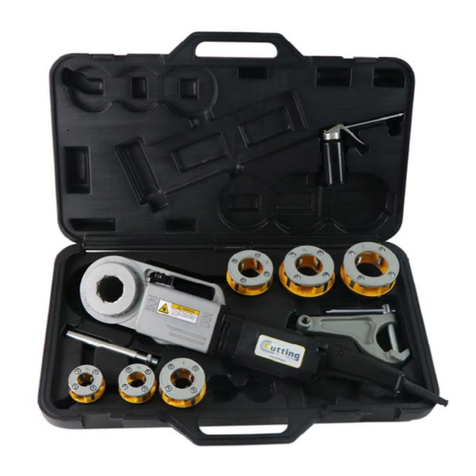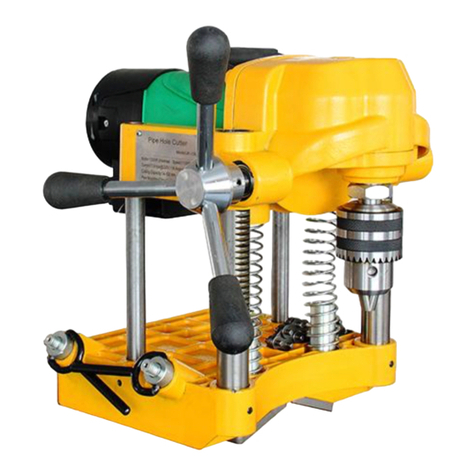
• Clear, level, stable, dry location for all of the equipment and operator.
• Properly grounded electrical outlet of the correct voltage. A three prong or GFCI outlet may
not be properly grounded. If in doubt, have outlet inspected by a licensed electrician.
• Clear path to electrical outlet that does not contain any potential sources of damage for the
power cord.
2. Inspect the work to be done. Determine the pipe type and size, and clearance around the
pipe. Determine the size and location of the hole to be cut. Clearly mark the cut location. If
installing a fitting, follow the fitting manufacturer’s instructions. Determine the correct
equipment for the job. See the Description and Specification sections for tool information.
Make sure that the pipe to be cut is well supported and stable. The pipe must be able to
handle the weight of the Hole Cutting Tool and the forces applied during cutting without
moving. If working on an existing system, make sure that the system has been depressurized
and drained. The Hole Cutting Tools are not designed for hot tapping purposes. Cutting into
pressurized or systems with fluids in them can cause spills, electrical shock and other serious
injury. Know the contents of the pipe and any specific hazards associated with the contents.
3. Confirm that the equipment to be used has been properly inspected,
4. Select an appropriate hole saw for the work to be performed. Make sure that the hole saw
is properly assembled per its instructions and is in good working order.
5. With the Hole Cutting Tool on a stable surface, install the hole saw into the chuck. Always
make sure that the ON/OFF switch is in the OFF position and the Hole Cutting Tool is
unplugged before installing or changing the hole saw or drill.
• Open the chuck wide enough for the shank of the hole saw. If needed, the chuck key can be
used to open the chuck. Make sure that the shank and the chuck jaws are clean.
• Fully insert the shank into the chuck. Make sure that the hole saw is centered in the chuck
and firmly tighten the chuck by hand. • Use the chuck key in all three chuck holes to securely
tighten the chuck onto the shank. Make sure to remove the chuck key from the chuck before
turning the tool ON.
Mounting The Hole Cutting Tool On The Pipe
Use good lifting technique when placing on the pipe, do not overreach, and keep good
balance and footing at all times. Depending on the circumstances, two people may be
necessary to mount the Hole Cutting Tool onto the pipe. Hole Cutting Tools can be used at
any angle or orientation. If cutting a hole on the side or bottom of a pipe, it may be easier to
place the Hole Cutting Tool on the top of the pipe to fasten the chain around the pipe and then
move the Hole Cutting Tool into final position.
1. Make sure the chain is hanging freely and the swivel handle is fully loosened.
2. Carefully lift the JK114 Hole Cutting Tool and place with the V-shaped guides squarely on
the pipe near the location of the cut. Make sure the chain is not between the pipe and tool
base.
3. Always keep at least one hand on the Hole Cutting Tool to stabilize and guide it. Grasp the
end of the chain and pull it snugly around the pipe. Hook the closest chain pin on the wear






























